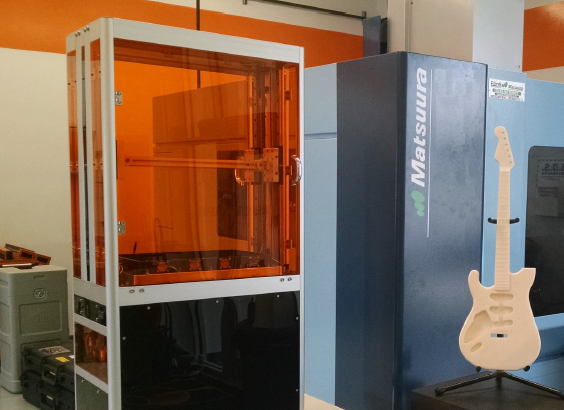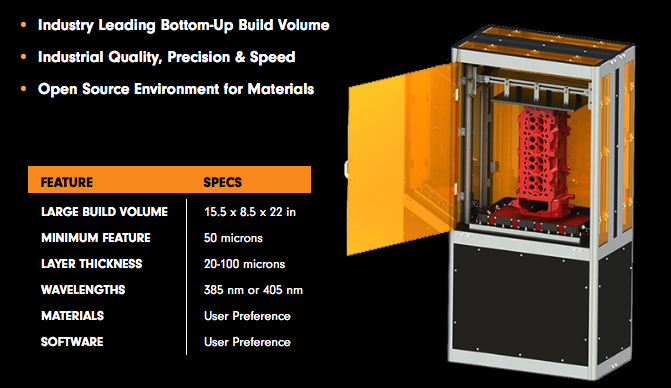From our friends at 3dpi we found this article. Though it is out of nearly all our price range the time will come (sooner than later I hope) when we all have one of these bad boys.
Toronto based industrial 3D printer manufacturer WAVE3D is set to launch the Wave3D Pro SLA machine.
Aiming to be the “world’s most financially accessible” industrial 3D printer of its kind, the Wave3D Pro challenges six-figure price points, and provides professionals with ample space to prototype bigger products.

Demo, time lapse print of a full size solid Fender guitar prototype on the Wave3D Pro. Clip via Wave3D Information on YouTube.
SpecificationsThe typical build size of SLA 3D printers has seen the technology used to make small-scale, high-detail objects, such as dental models, or jewelry designs.
By contrast, the Wave3D Pro has a volume of 15.5 X 8.5 X 22 inches, making it capable of printing objects like a scale model of a Fender guitar in a single print. While not the biggest, this is still substantial.
The average layer resolution of Wave3D printer is given as 50 microns, which is equal to 0.05mm.

To enable industrial-scale capabilities, many aspects of the SLA process had to be re-engineered for the Wave3D Pro 3D printer. One example given by the company is in the lining of the machine’s build tray.
In place of silicone, WAVE3D have used an optically clear film which can be easily replaced if it should get damaged or overused. Additionally, the company explains “this technique provides no hazing and virtually no sticking so large flat surfaces can be printed with ease.”
The company have also made materials and software open for its users, encouraging experimentation and making the machine easy to use.

The finished specs are the result of two years research and development by the Canadian team.
“In our early market research,” explains Ajay Deshmukh , Co-Founder and CEO of WAVE3D, “large size, high quality, reliability and affordability remained a combination that was just not available.” He continues,
Today, large, industrial 3D printing is still a six-figure proposition for almost any company that wants to produce large, high quality parts […] Compromises needed to be made, on either size, or materials available, or even with the orientations of prints in order to get the types of industrial output needed for enterprise applications. We simply asked ourselves, how could we deliver a final outcome that rivaled all aspects of an industrial printer, with the simplicity of a desktop.Now the company are due to start a pilot production run of the machine but are seeking investment to take manufacturing to the next level. Small scale production makes the Wave Pro 3D currently available for $60,000 USD.
Article: https://3dprintingindustry.com/news/wave3d-launching-large-volume-sla-3d-printer-118556/
Featured image: A 3D printed scale model of the Eiffel Tower made on the Wave3D Pro. Screenshot via Wave3D Information on YouTube.
www.3dprintersupplyco.com
 smile comes easily.
smile comes easily.